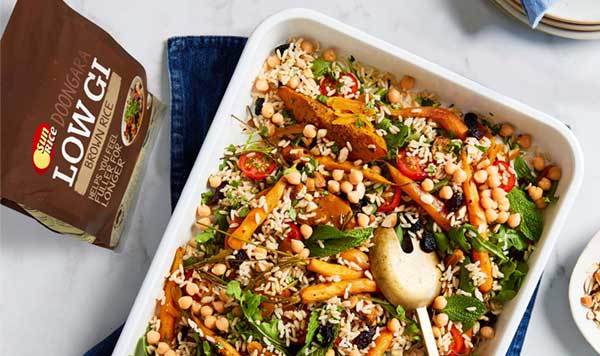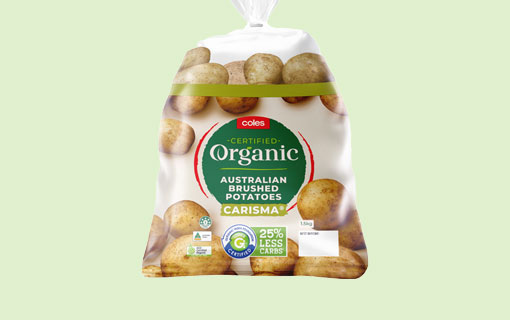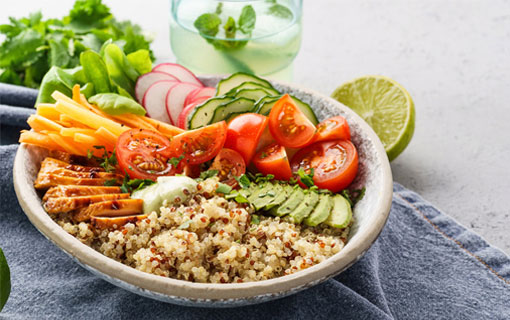GI and Heart Disease
Implementing a healthy low GI diet and getting more physical activity can significantly reduce someone’s risk of developing heart disease.

The facts at a glance
Heart disease is the leading cause of death in Australians. It occurs when blood flow and oxygen supply to the heart is restricted due to a build-up of fat, cholesterol and plaque that clogs arteries.
Cardiovascular diseases are the major cause of mortality in diabetes, however it is often preventable.
High blood pressure, high cholesterol and diabetes can all increase the chance of developing heart disease, which can be managed via a low GI diet.
ON THIS PAGE
PRINT, DOWNLOAD, SHARE
About heart disease
Heart disease is one of the most common complications that people with diabetes develop, however most people don’t know this and underestimate their risk. According to a Diabetes Australia survey, the good news is that 99% of people said they would act to reduce their risk, if they were aware of it.
The high glucose (sugar) levels in the blood of people with diabetes can eventually damage blood vessels as well as the nerves that control them. Body tissues typically use sugar as an energy source, which is stored in the liver as a form of glycogen.
If you have diabetes, sugar can stay in your bloodstream and leak out of the liver into your blood, with subsequent damage to your blood vessels and the nerves that control them. A blocked coronary artery can slow or stop blood from supplying oxygen and nutrients to your heart. The risk of heart disease increases the longer you have diabetes.
Monitoring blood sugar is an important part of properly managing diabetes. Lifestyle changes, including a healthy low GI diet and getting more physical activity can significantly reduce someone’s risk of developing heart disease.
How a low GI lifestyle can help
Evidence shows that a low GI lifestyle can help reduce the risk factors of heart disease and improve heart health by:
- Improving the elasticity of blood vessel walls and blood flow by reducing post-meal blood glucose levels
- Improving blood cholesterol levels, independent of the benefits of weight loss
- Reducing the risk of atherosclerosis, a chronic disease affecting blood vessels
- Aiding abdominal fat reduction
People with diabetes are between two and four times more likely to develop heart disease.
In a given year between 11,000 and 33,000 Australians will suffer a diabetes-related heart attack.
Heart disease is the number one cause of death for people with type 2 diabetes and contributes to around two thirds of all deaths in people with diabetes.
Source: International Diabetes Federation and Diabetes NSW
Heart friendly low GI lifestyle tips:
1. Eat plenty of colourful vegetables and fruits
Seasonal and fresh vegetables and fruits contain a variety of vitamins and minerals, as well as fibre and antioxidants, and have been shown to help prevent heart disease. Aim for five serves of different coloured vegetables and two serves of fruit a day.
2. Enjoy low GI grains and cereals
Be choosey about the types and grains and cereals you eat. Low GI and high fibre and can help lower your cholesterol. While eating more wholegrains is associated with a lower risk of developing cardiovascular disease (heart disease and stroke), avoid the finely milled grain foods even when they claim to be ‘wholegrain’ as this may affect the overall GI. Look for low GI choices with whole grain kernels, pearl barley, grainy, wholewheat pasta and rolled or steel cut oats. If in doubt, look for the Low GI Symbol.
3. Include a variety of healthy protein-rich foods
Some protein-rich foods are better choices than others. The best options are plant-based proteins like beans, chickpeas, lentils, nuts and seeds, as well as fish and seafood. These foods have been shown to reduce your risk of developing heart disease. Eggs and poultry are also protein-rich foods that can be enjoyed as part of a heart-healthy eating pattern. If you eat red meat, it’s best to limit it to one to three meals per week and limit processed meats such as smallgoods and deli meats.
3. Choose calcium-rich milk, yoghurt and cheese
Dairy foods will not increase or decrease your risk of heart disease, but they can be an important source of calcium, protein and other minerals. They have a low GI and help lower blood pressure when consumed in a diet with plenty of vegetables and fruits. Regular milk drinkers have a lower risk of heart disease and stroke, and emerging research is discovering beneficial ‘bio-actives’ in dairy such as lactoferrin which enhances bone and immune health. If you have heart disease or high cholesterol, reduced-fat milk, yoghurt, and cheese are healthier options.
4. Quality healthy fats and oils that count
Just like carbohydrates, it’s the quality of fats we choose which is important. Fats and oils can play an important role in your risk of developing heart disease. Healthy fats can help protect your heart, and unhealthy fats can increase your risk of developing heart disease. Choose foods with high amounts of healthy fats such as avocados, olives, nuts and seeds, and use healthy oils for cooking, for example, olive, canola, sunflower, peanut and soybean oil. These foods can help lower your cholesterol.
5. Add flavour to foods with herbs and spices instead of salt
Eating too much salt can lead to high blood pressure, which is a risk factor for heart disease. Most of the salt we eat is found in processed and packaged foods such as canned foods, smallgoods or deli meats (like ham and salami) and baked foods. One of the best ways to reduce the amount of salt you eat is to base your diet on fresh, unprocessed foods like fruit and vegetables. If you want to add extra flavour to your food, try adding herbs and spices.
Research and further reading
- Low-glycemic-index foods can decrease systolic and diastolic blood pressure in the short term
- Low glycaemic index diets and blood lipids: a systematic review and meta-analysis of randomised controlled trials
- Preliminary report: the effect of a 6-month dietary glycemic index manipulation in addition to healthy eating advice and weight loss on arterial compliance and 24-hour ambulatory blood pressure in men: a pilot study
- Food consumption and the actual statistics of cardiovascular diseases: an epidemiological comparison of 42 european countries
- Effects of weight loss and long-term weight maintenance with diets varying in protein and glycemic index on cardiovascular risk factors: the diet, obesity, and genes (diogenes) study: a randomized, controlled trial
- Associations of glycemic index and load with coronary heart disease events: a systematic review and meta-analysis of prospective cohorts
- Glycemic load, glycemic index and risk of cardiovascular diseases: meta-analyses of prospective studies
Recommended for you

RECIPES

GI CERTIFIED PRODUCTS
DIABETES

LOW GI LIVING


A low GI diet focuses on the quality of carbohydrates you eat. Good carbohydrates (or low GI carbohydrates) are more slowly digested helping keep your blood sugars stable, whereas bad carbohydrates cause your blood glucose levels to peak and crash. Want to know which carbohydrates are best for you? Try our swap it tool!


